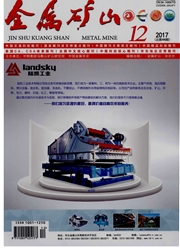

 中文摘要:
中文摘要:
为尽可能地降低弓长岭露天铁矿何家采区生产爆破对周边村民房屋的影响,控制爆破振动负面效应,对其生产爆破在爆区与其附近的何家村之间采用定点观测的方法进行监测。基于现场监测数据,采用数值模拟方法,通过ANSYS/LS-DYNA软件对采区生产爆破过程进行了动态演化,重现了监测爆区的爆破情形。同时,对不同的台阶爆破方案在采区附近村民房屋处产生的振动速度进行了预测,得到其在离采区最近的村民房屋处的爆破质点振动垂直方向最大速度分别为3.64mm/s和5.82mm/s,并以低于爆破安全规程允许值为依据,通过分析对比,对采区的台阶爆破方案进行了优选,确定了合理的台阶爆破方案为同段起爆的最多炮孔数增加到2个,为矿山控制生产爆破过程中所产生的振动强度提供了参考。
 英文摘要:
英文摘要:
In order to reduce the effect of blasting during the production on surrounding environments as much as possible and control the negative effect of blast vibration,the method of fixed-point observation was used to monitor the production and blasting in the area between explosion and Hejia village.Based on the site monitoring data,the blasting process e in the mining area was dynamically simulated by the numerical software(ANSYS/LS-DYNA)to represent the blasting situation in the blasting area.Meanwhile,the vibration velocity near the houses under different bench explosion schemes was predicted,obtaining that the maximum speed of blasting particle in the vertical direction was 3.64mm/s and 5.82mm/s respectively.Taking the value lower than that in the Safety regulations for blasting practices as a basis,and through contrasting and analysis,schemes of the bench explosion in the mining area were optimized and the maximum number of blast holes at the same level increased to 2was determined as the reasonable bench explosion scheme.All these provide the references for controlling vibration strength in blasting.
 同期刊论文项目
同期刊论文项目
 同项目期刊论文
同项目期刊论文
 期刊信息
期刊信息
